常民劇場
Vernacular Theater
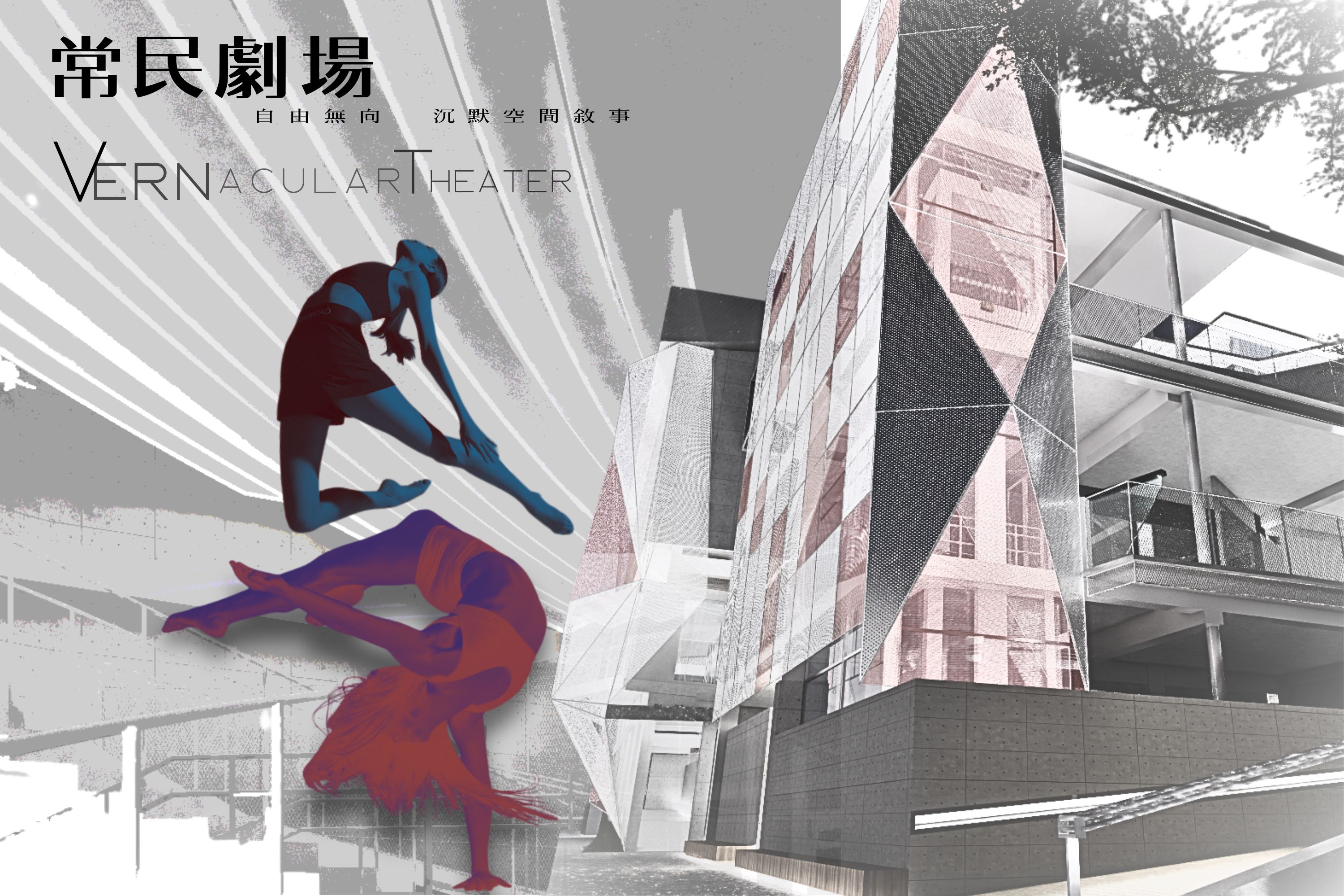
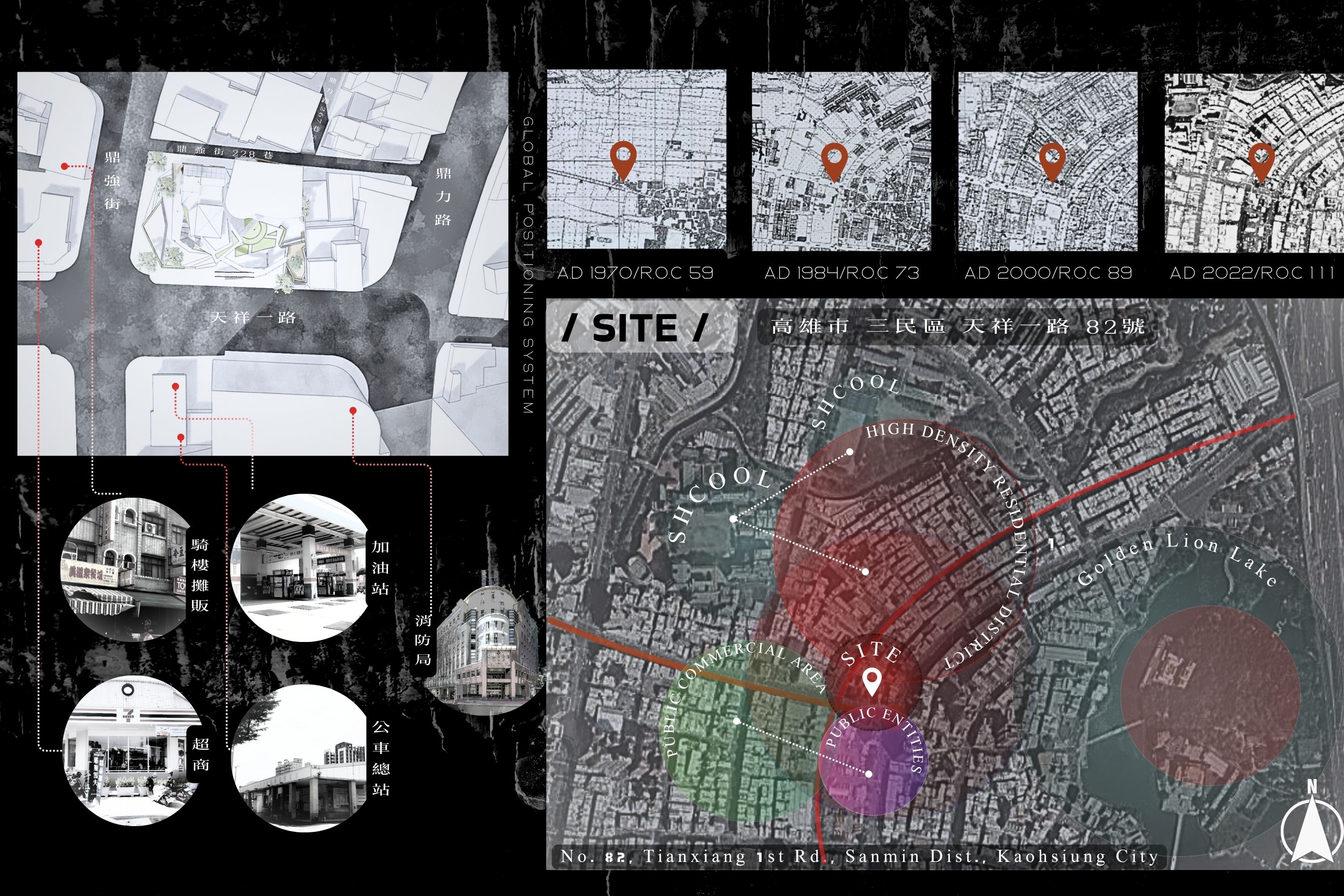
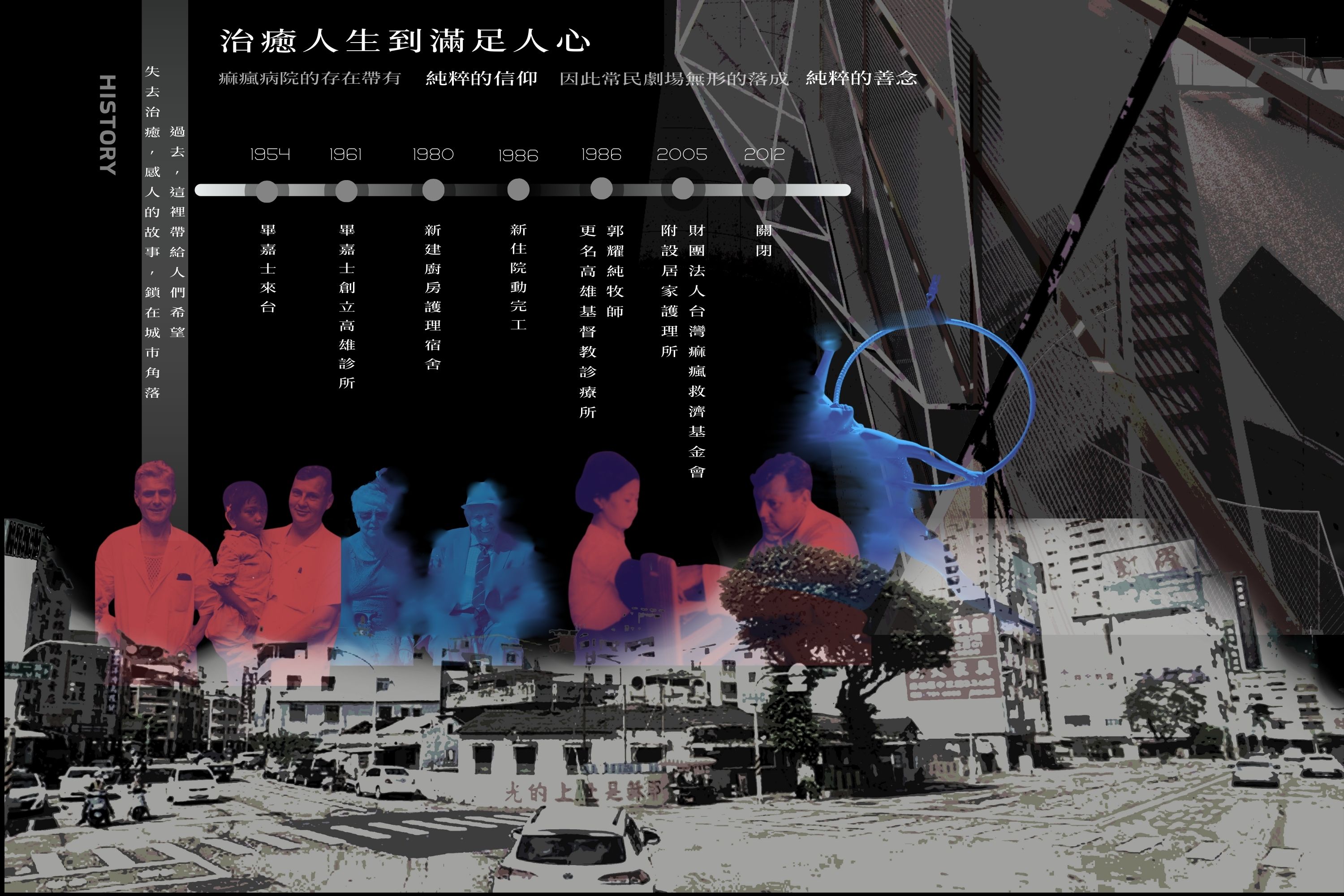
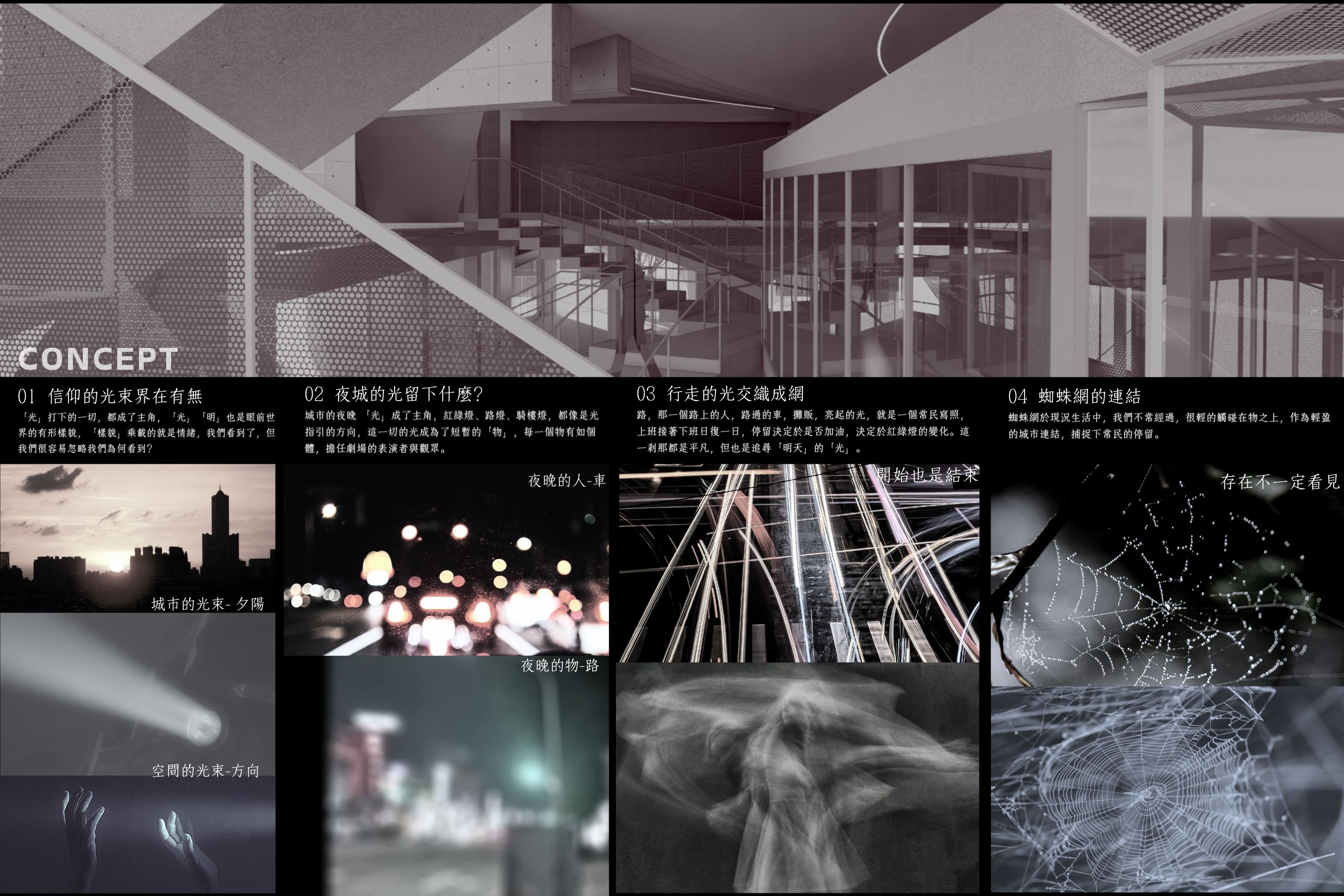
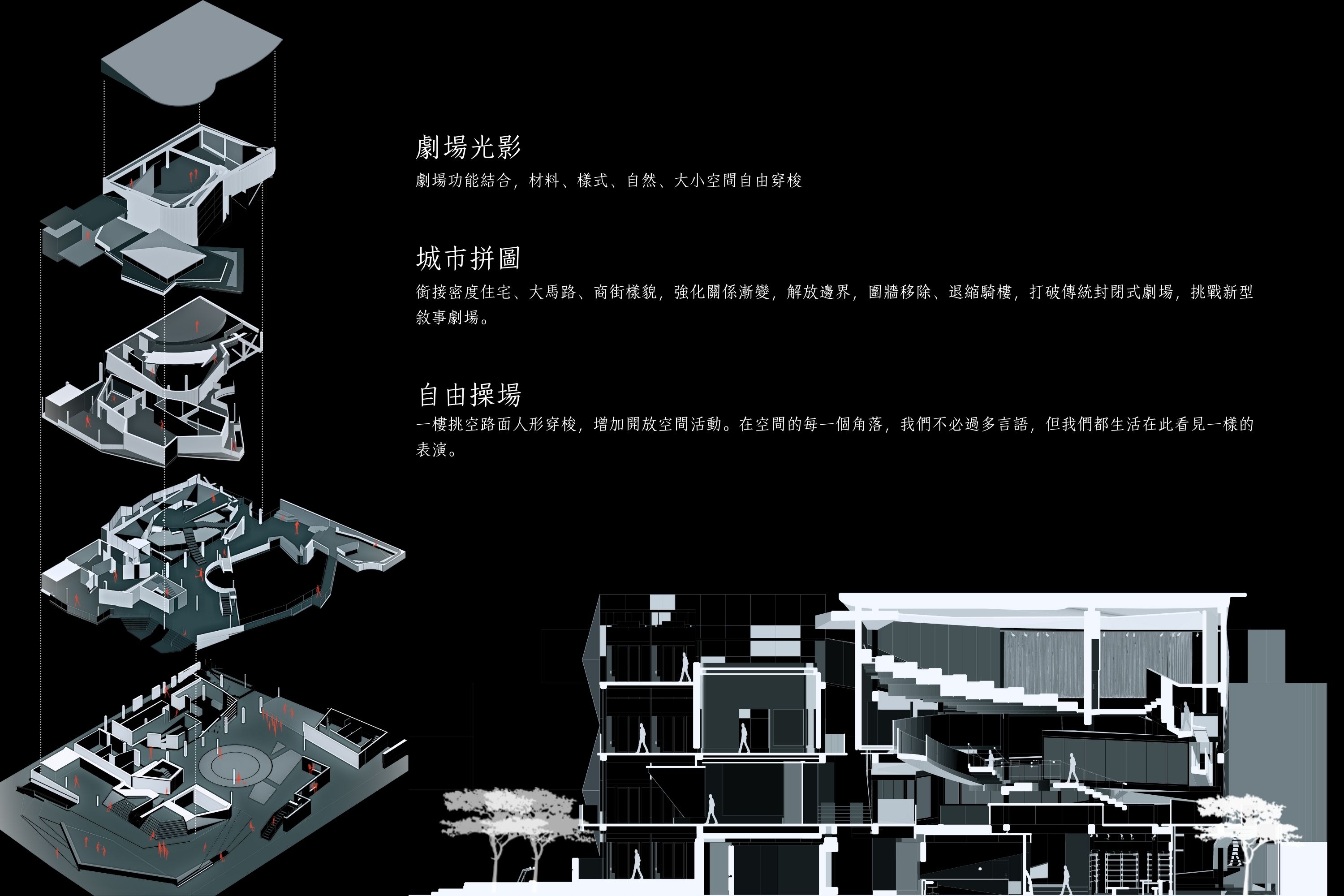
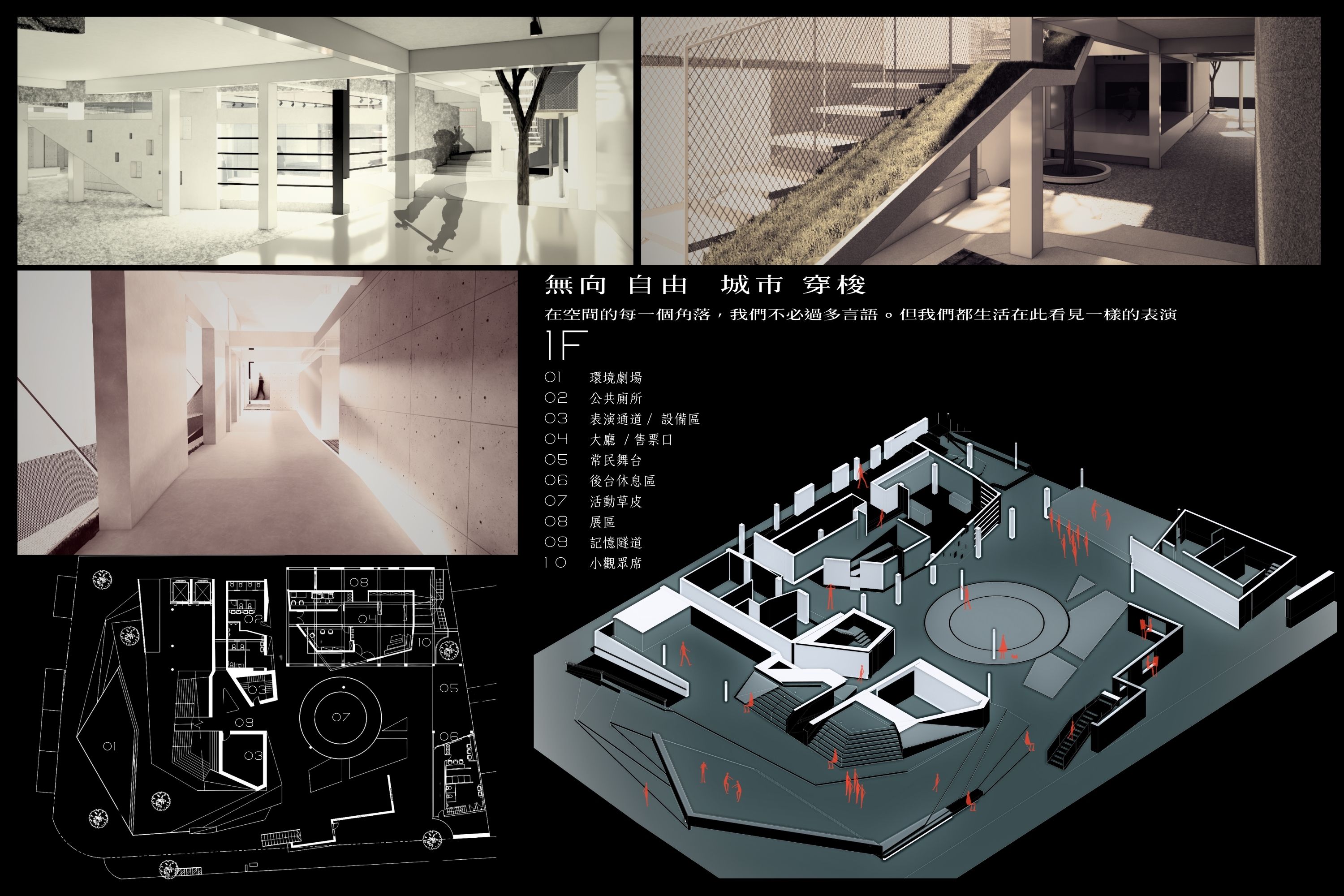
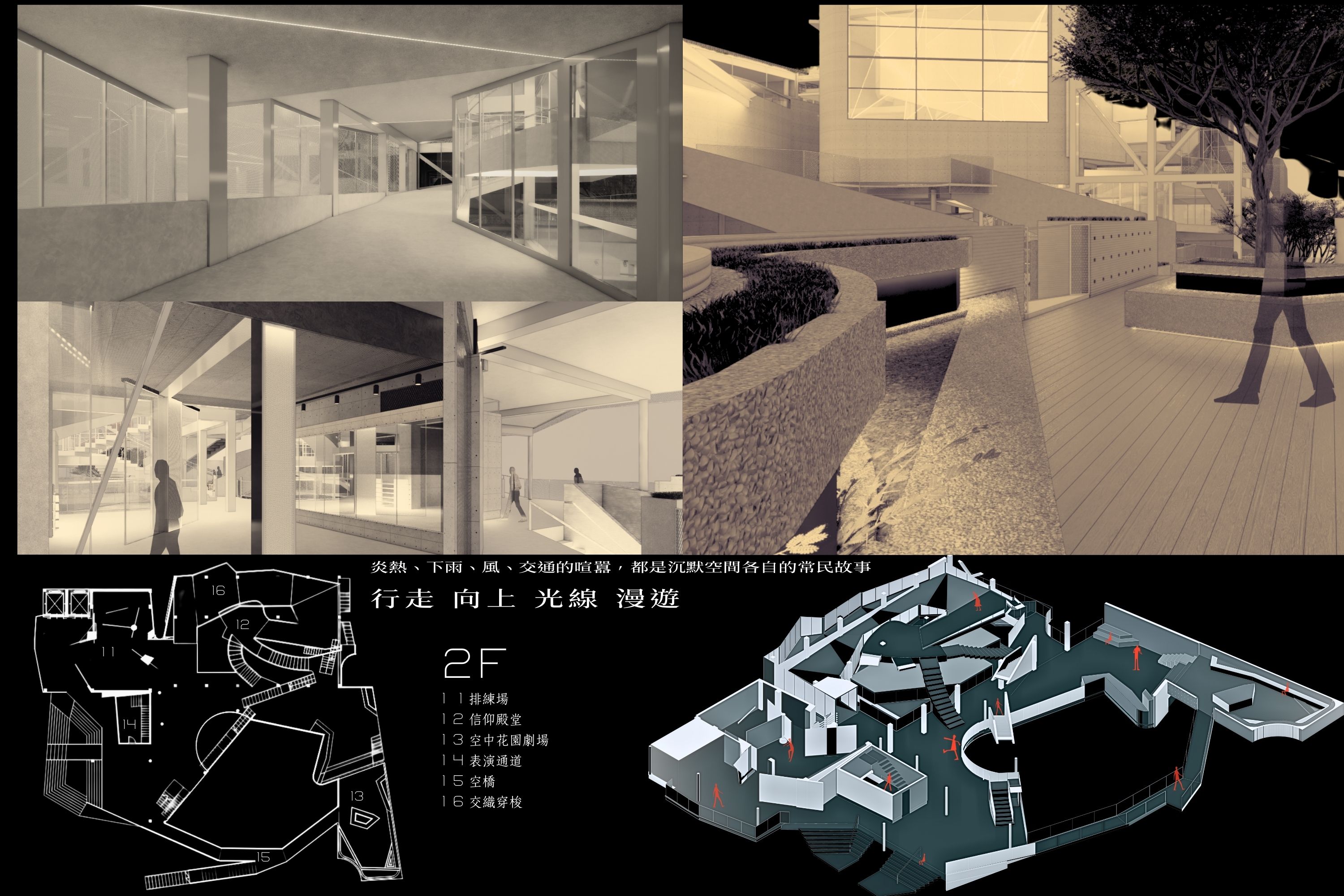
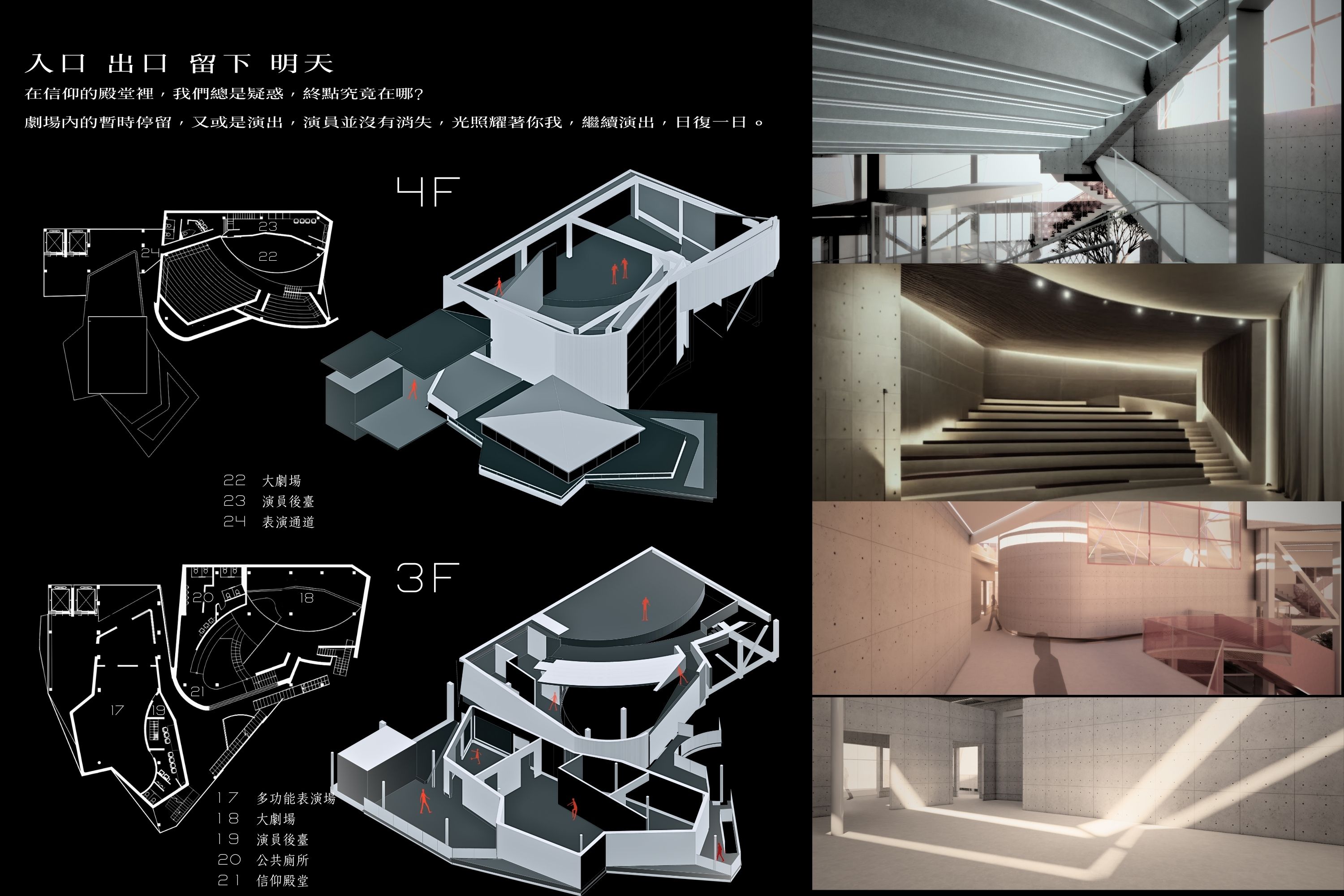
在高雄的城市中,生活的期待潛藏於屋簷下,也藏在人們心中。日常如無聲的演出,微不足道的瞬間,都能帶來滿足與感動。開始,也意味著某種結束,而光影交錯之間,構築出流動的劇場。
光,不只是建築的輪廓線,更是時間與情感的載體。當人們穿梭就成為環境的主角;城市霓虹、車流,而空間提供駐足、沉浸的思緒,讓生活的剎那被記錄。
透過兩條交錯的路徑設計,從外向內,再由內向外,行走間感受光的變化。無論獨自一人,或置身於人潮之中,聲音與光線都滲透建築,隨著白晝與黑夜更迭,時間讓劇場演出城市的生活。
當我們捕捉光,成為光的一部分,並穿梭於空間時,第四面牆便被打破,自我蛻變。此刻,劇場的界線消融,光與環境交織出屬於城市的故事。這座建築是信仰的象徵,承載著深厚的意涵,卻又輕盈如蜘蛛網般,細膩而靈動。
行走之間,終點究竟在哪裡?每一次短暫的停留,都是一場未完的演出,演員從未真正離開。光灑落於我們身上,劇場依然延續,日復一日,步向未來。
「明」,不僅是光,更象徵著明天。光延續著空間、建築與生活的對話,照亮了時間的流動,也照亮我們的未來。這裡,是常民劇場(Vernacular Theater)。
Vernacular Theater
In the city of Kaohsiung, the anticipation of life hides beneath the eaves and within people's hearts. Daily life unfolds like a silent performance—fleeting moments that may seem insignificant yet bring fulfillment and emotion. Every beginning also signifies an end, and within the interplay of light and shadow, a fluid theater takes shape.
Light is more than just the outline of architecture; it is a vessel for time and emotion. As people move through the space, they become the protagonists of their surroundings. Amidst the flickering neon lights and the flowing traffic, this space offers a place to pause, immerse in thought, and capture the essence of life.
Through two intersecting pathways—one leading inward, the other outward—individuals experience the shifting nature of light as they walk. Whether alone or within a crowd, sound and light permeate the structure. As day and night alternate, time flows, turning the theater into a stage that performs the rhythm of urban life.
When we capture light, become part of it, and move through space, the fourth wall dissolves, and the self undergoes transformation. In this moment, the boundaries of the theater fade, and light intertwines with the environment, composing a story that belongs to the city. This structure stands as a symbol of faith, carrying profound meaning, yet remains as delicate and fluid as a spider’s web.
As we walk, we ask: where does the journey truly end? Perhaps every brief pause is part of an unfinished performance, where the actors never truly leave. As light falls upon us, the theater continues—day after day, leading us toward the future.
"Ming" (明) is not only light; it also signifies tomorrow. Light sustains the dialogue between space, architecture, and life. It illuminates the flow of time, and it illuminates our future. This is Vernacular Theater.
正修科技大學 建築與室內設計系
(四年級)
徐丞泓
正修科技大學 建築與室內設計系
(四年級) 指導老師 郭美紅